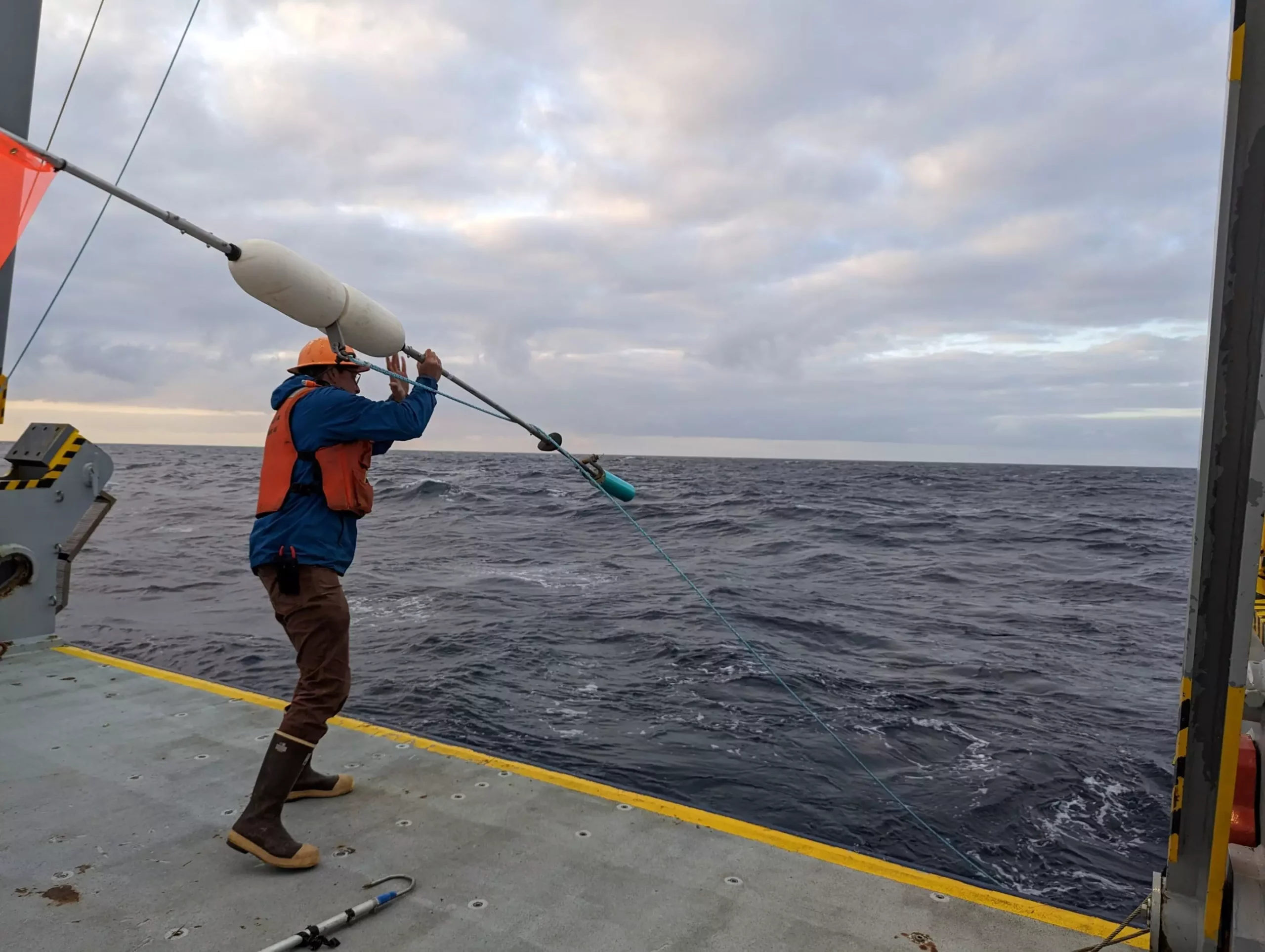The sequestration of carbon dioxide (CO2) in the deep ocean is a significant process with implications for global climate patterns. As atmospheric CO2 interacts with the ocean’s surface, a portion is transported to deeper layers where it can remain for extended periods. This complex journey is influenced by various microscale phenomena, particularly the dietary preferences of ocean-dwelling bacteria that specialize in consuming organic molecules like lipids.
Recent research, published in the journal Science, reveals the intricate interplay between microbial diets and carbon export mechanisms. This study emphasizes the importance of understanding how different microbial communities interact with organic matter, which may ultimately inform us about the processes governing carbon sequestration in oceans.
At the core of these findings is the biological carbon pump—a natural phenomenon that facilitates the sinking of organic biomass from the ocean’s surface to its depths. This process helps regulate global CO2 levels. Approximately 5% to 30% of the particulate organic matter in the upper layers of the ocean consists of lipids, fatty biomolecules that serve as both energy reserves and biological building blocks for microorganisms.
Researchers have found that the degradation of these lipids by bacteria plays a crucial role in influencing the efficiency of carbon sequestration. Different species of bacteria exhibit varying dietary preferences regarding lipid consumption, adopting roles that can be classified along a spectrum from selective to generalist feeders. This variability has vast implications for understanding the rates at which carbon is transported to the deep ocean.
The Importance of Bacterial Dietary Preferences
The findings from the study underscore that microbial communities are not just indiscriminate consumers of organic material. Rather, they harbor specific preferences that drive their interactions with lipids. This research utilized advanced methods to correlate the molecular composition of sinking biomass with its degradation rates—tying them directly to the dietary habits of bacteria.
Co-author Benjamin Van Mooy highlights the real-world implications of understanding these dietary choices, stating that identifying regions of the ocean where lipids are effectively sequestered could be vital for enhancing natural carbon capture efforts. Geographical variations can drastically alter the efficiency of the biological carbon pump, leading scientists to reevaluate areas previously considered ineffective for carbon sequestration.
The complexities of microbial interactions among various species deepen our understanding of lipid degradation. Utilizing synthetic communities that replicate the distinct dietary preferences of isolates, researchers demonstrated that these interactions can modulate lipid breakdown significantly. The mesopelagic zone, which ranges from about 200 to 1,000 meters below the ocean surface, serves as a focal point for this interaction analysis.
Roman Stocker, a co-author of the study, expressed excitement regarding the innovative use of high-end chemical analysis alongside microscale imaging techniques. This combination of technologies offers fresh perspectives on the role of microbes in global biogeochemical cycles, asserting that ongoing research at this intersection could yield transformative insights.
The study also illuminates how environmental factors, including geographic location and seasonal changes, can affect the types of lipids available and the bacteria that thrive in those conditions. Understanding the variation of lipid composition across different marine environments—such as coastal versus open ocean regions—will help researchers identify areas that are particularly rich in resources for microbial communities.
This recognition leads to a broader understanding of carbon sequestration hotspots, where specific conditions could promote enhanced lipid transport to the deep ocean, contributing positively to the global carbon cycle.
The Future of Microbial Research and Carbon Dynamics
The implications of this research extend beyond simple microbial ecology; they emphasize the necessity of studying complex communities rather than isolated species when assessing degradation processes. The collaborative consumption among different bacterial species may lead to more effective breakdown of particular compounds, altering our understanding of how nutrients and organic materials cycle through marine environments.
Moreover, notably, phytoplankton remains at the forefront as a key player in the ocean’s capability to sequester carbon, absorbing significant amounts equivalent to terrestrial flora. The synthesis of new technologies with traditional ecological methods provides an avenue for future research exploring how these interactions will evolve in response to changes in oceanic conditions under climate change.
Unraveling the complexities of microbial dietary preferences enhances our grasp of the ocean’s capabilities for carbon sequestration. While this study marks a significant step forward, continuous exploration in this field is crucial for forecasting the health of our oceans and their role in mitigating climate change.

